I got the garden in about 10 days ago and things are starting to sprout. This is the most exciting time in gardening for me: the babies emerging. We’ve had plenty of rain, although it’s not been as warm and sunny as most plants like until just recently. A couple days of sun really made the seedlings pop. Before I tilled the garden I saved the volunteers, little plants that sprouted from seeds produced last fall. I got a volunteer sunflower, a head lettuce and two bachelor buttons.

The started plants I buy at a greenhouse are also in. This year I purchased Early Girl tomatoes and purple sweet peppers. The tomatoes may look innocent right now but before long they will become a jungle. This year I got some tomato cages which I will set soon. These are designed to hold recumbent plants up in the air, keeping the fruit cleaner and elevating them out of the reach of rodents (hopefully!)
 Something just happened to one of the little pepper plants. There were six yesterday morning, but in the afternoon one had been nipped off about one inch above the surface and the leaves were left scattered to wizen on the ground. I’m hoping the stub remaining might continue to grow.
Something just happened to one of the little pepper plants. There were six yesterday morning, but in the afternoon one had been nipped off about one inch above the surface and the leaves were left scattered to wizen on the ground. I’m hoping the stub remaining might continue to grow.
Not sure what would have pulled a stunt like this. There are no tracks, no evidence of the perpetrator of this crime. 
The corn is just emerging, the sprouts about 2″ tall. With luck it will reach eight feet and produce two ears per stalk of indian corn for fall decorating. The weather has been a bit chilly and damp for corn. The crop likes heat and high humidity. June is usually full of that sort of weather. I hope so. I need these to be knee high by the Fourth of July.
This year I’ve planted lots of wax bush beans. They are emerging well. Sure hope the pepper murderer doesn’t start on them! I want to can a couple dozen pints of beans this year if the plants cooperate. Here is a baby bean just beginning to unfold.
Once more I’ve planted those strange tendril peas. My granddaughters and I love to eat the peas raw right off the vine. These peas are masses of curling tendrils with hardly any leaves. They hold on to each other and don’t require supports to grow off the ground. I’ve planted mine right beside the garden fence. They will quickly grab onto the slats and haul themselves all the way to the top. These pea sprouts are about one inch high.
My garden is planted to three types of pumpkins: field for Halloween, small, sweet ones for pie and mini Jacks for fall decorating. So far the field pumpkins have begun emerging. These can take a couple weeks to come up, with the mini ones being the slowest to germinate.
Rainbow chard is up. These babies are about an inch high. They grow to over a foot long in no time. Can hardly wait, I love me some fresh steamed chard! Or raw in salad, or blanched with a little salt and butter. Hmm, I’m starting to get hungry. The rainbow selection is a mix of three different plant stem colors, white, red and orange. A surprise was that the carrots are also up. It usually takes them the longest to sprout, sometimes over two weeks. These guys are in a hurry, I guess. Probably the ample moisture from the excessive rain has brought them on quickly. The carrots are the light green plants. There are also baby crab grass and one little pig weed among the carrots. Also, there is what appears to be a white caterpillar wandering by. Could this be the suspect in the pepper murder??? Not too likely; caterpillars usually eat leaves.
A surprise was that the carrots are also up. It usually takes them the longest to sprout, sometimes over two weeks. These guys are in a hurry, I guess. Probably the ample moisture from the excessive rain has brought them on quickly. The carrots are the light green plants. There are also baby crab grass and one little pig weed among the carrots. Also, there is what appears to be a white caterpillar wandering by. Could this be the suspect in the pepper murder??? Not too likely; caterpillars usually eat leaves. Beyond vegetables, I’ve planted some flower seeds to bring a little color to the garden. There are sunflowers planted along the perimeter. Also, I dropped in some nasturtiums, marigolds and zinnias. The flowers encourage bees and butterflies to visit as well as brightening the space. The flowers have not sprouted yet.
Beyond vegetables, I’ve planted some flower seeds to bring a little color to the garden. There are sunflowers planted along the perimeter. Also, I dropped in some nasturtiums, marigolds and zinnias. The flowers encourage bees and butterflies to visit as well as brightening the space. The flowers have not sprouted yet.
There are feathers in a few of the photos. These came from the chicken manure I spread on the vegetable patch last fall. Chicken fertilizer is great for the garden. It’s got a good nitrogen content and very few weed seeds. Since I substituted chicken for horse manure in the garden, there has been a noticeable reduction in weeds. Chicken manure=happy plants and a happy gardener!












































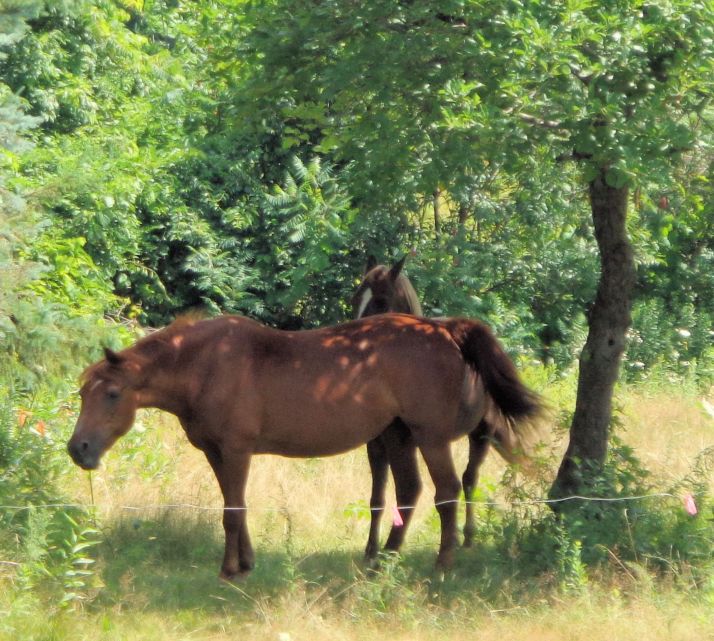

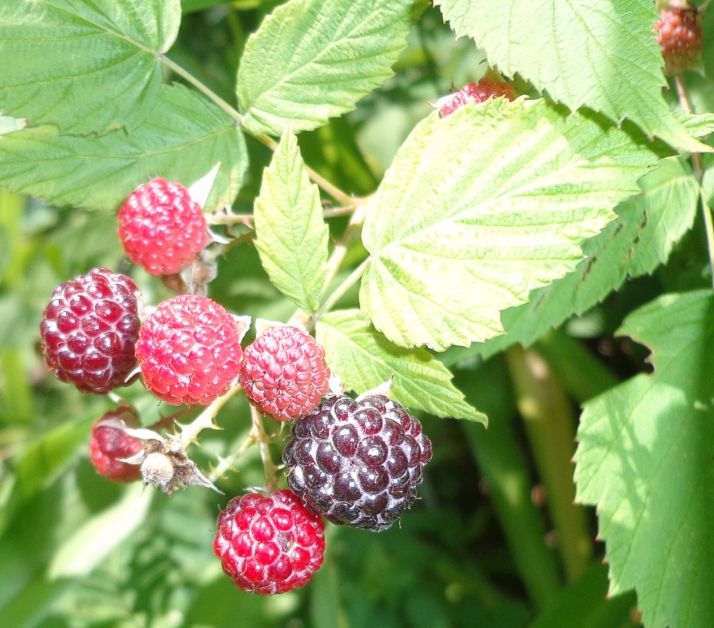






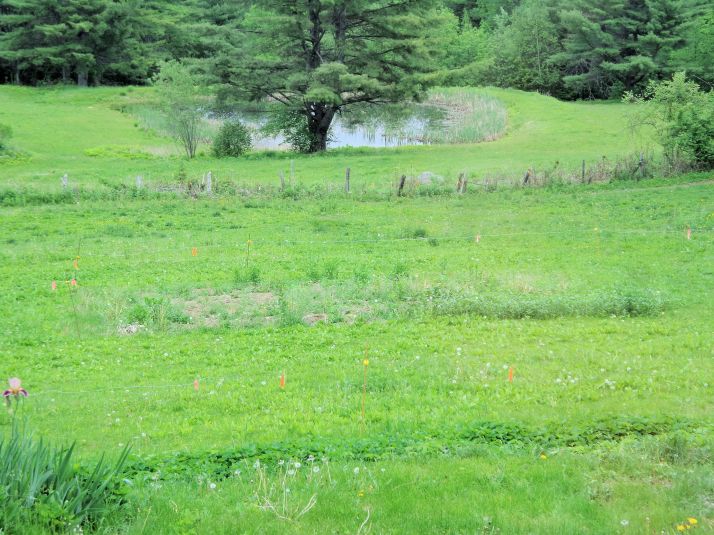 The spring has been cool and dry, again. Chance of frost still exists, but I’m willing to get started now. Tomorrow’s forecast is rainy, perfect for jump-starting plants. Next week I will put the tender tomato and pepper seedlings in the ground.
The spring has been cool and dry, again. Chance of frost still exists, but I’m willing to get started now. Tomorrow’s forecast is rainy, perfect for jump-starting plants. Next week I will put the tender tomato and pepper seedlings in the ground. Since I was a kid, the farm pond has made for good skating when conditions are just right. This is the first year in several when decent ice has formed. The last few winters snow ruined the ice as fast as the pond froze.
Since I was a kid, the farm pond has made for good skating when conditions are just right. This is the first year in several when decent ice has formed. The last few winters snow ruined the ice as fast as the pond froze. We’ve had an open, warm winter so far. Just recently the temperatures dropped enough to make safe ice. My skating buddies Holly and Otto joined me on an afternoon when the temperature was just above freezing, the sky deep blue and the sun beaming down. The weather is so mild it’s like no winter at all!
We’ve had an open, warm winter so far. Just recently the temperatures dropped enough to make safe ice. My skating buddies Holly and Otto joined me on an afternoon when the temperature was just above freezing, the sky deep blue and the sun beaming down. The weather is so mild it’s like no winter at all! The horses, Vista and Maddie, hang around to see what will happen. Perhaps some hay or grain or an apple will fall from my pocket while I’m skating. Horses live in a dreamworld of eternal hope.
The horses, Vista and Maddie, hang around to see what will happen. Perhaps some hay or grain or an apple will fall from my pocket while I’m skating. Horses live in a dreamworld of eternal hope. The ice is white, full of air bubbles. The surface is fairly smooth, except where cattails protrude making skating obstacles. Some winters when we have sudden very cold, still weather the whole pond freezes with black ice. The surface seems made of glass.
The ice is white, full of air bubbles. The surface is fairly smooth, except where cattails protrude making skating obstacles. Some winters when we have sudden very cold, still weather the whole pond freezes with black ice. The surface seems made of glass.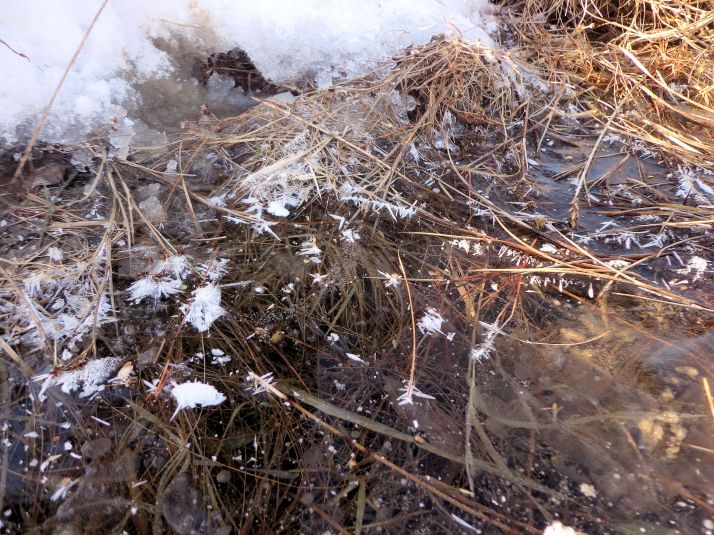
 The pond is about 1/6 acre with a seasonal inlet that flows when the water table is sufficiently high. The constant slow movement keeps one small area of open water available for the horses to drink. If the temperatures drop too low or the snow gets too deep, this inlet also freezes. Then the horses must walk farther for water to a spring below the pond.
The pond is about 1/6 acre with a seasonal inlet that flows when the water table is sufficiently high. The constant slow movement keeps one small area of open water available for the horses to drink. If the temperatures drop too low or the snow gets too deep, this inlet also freezes. Then the horses must walk farther for water to a spring below the pond.



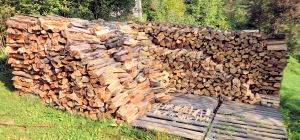



You must be logged in to post a comment.